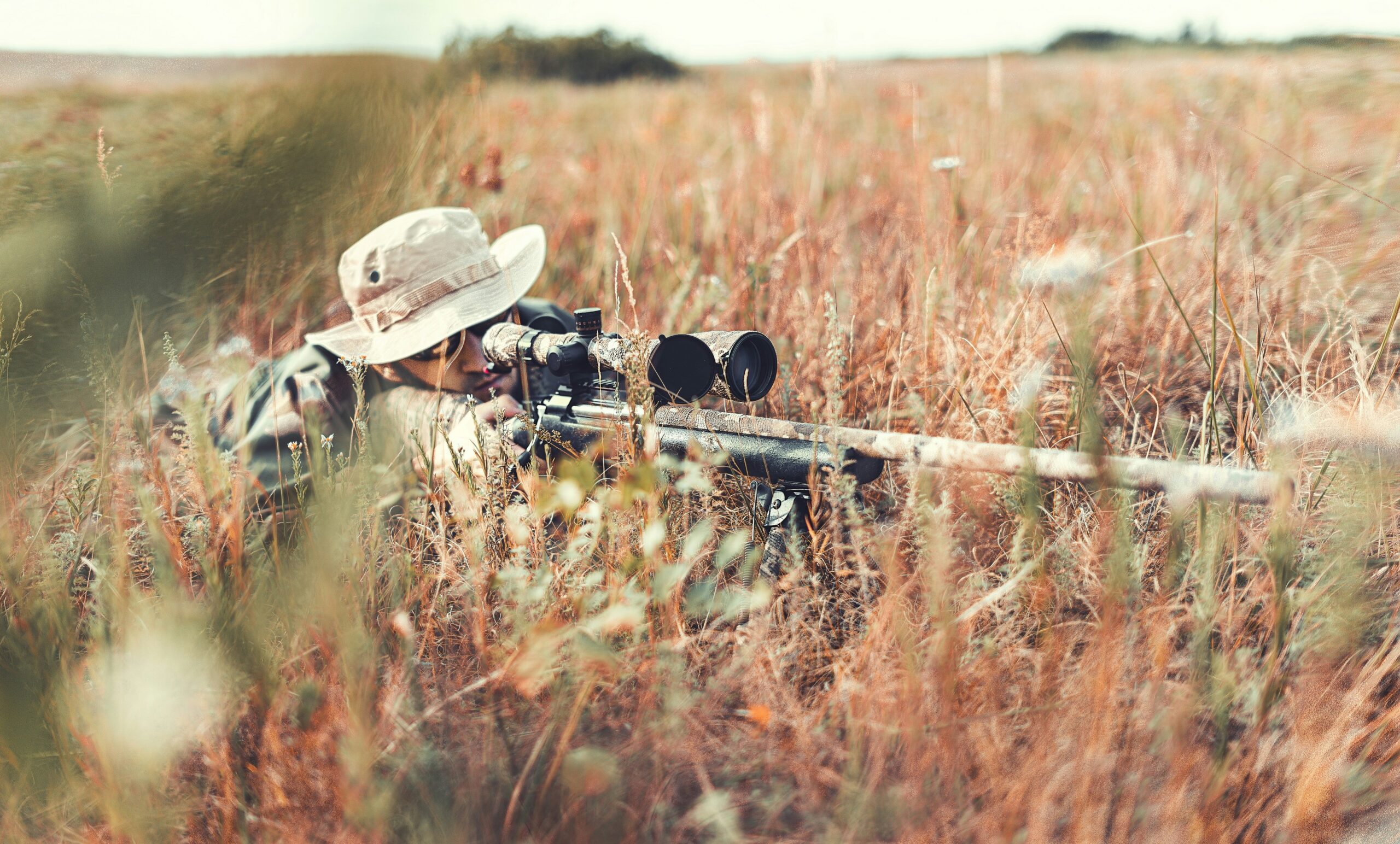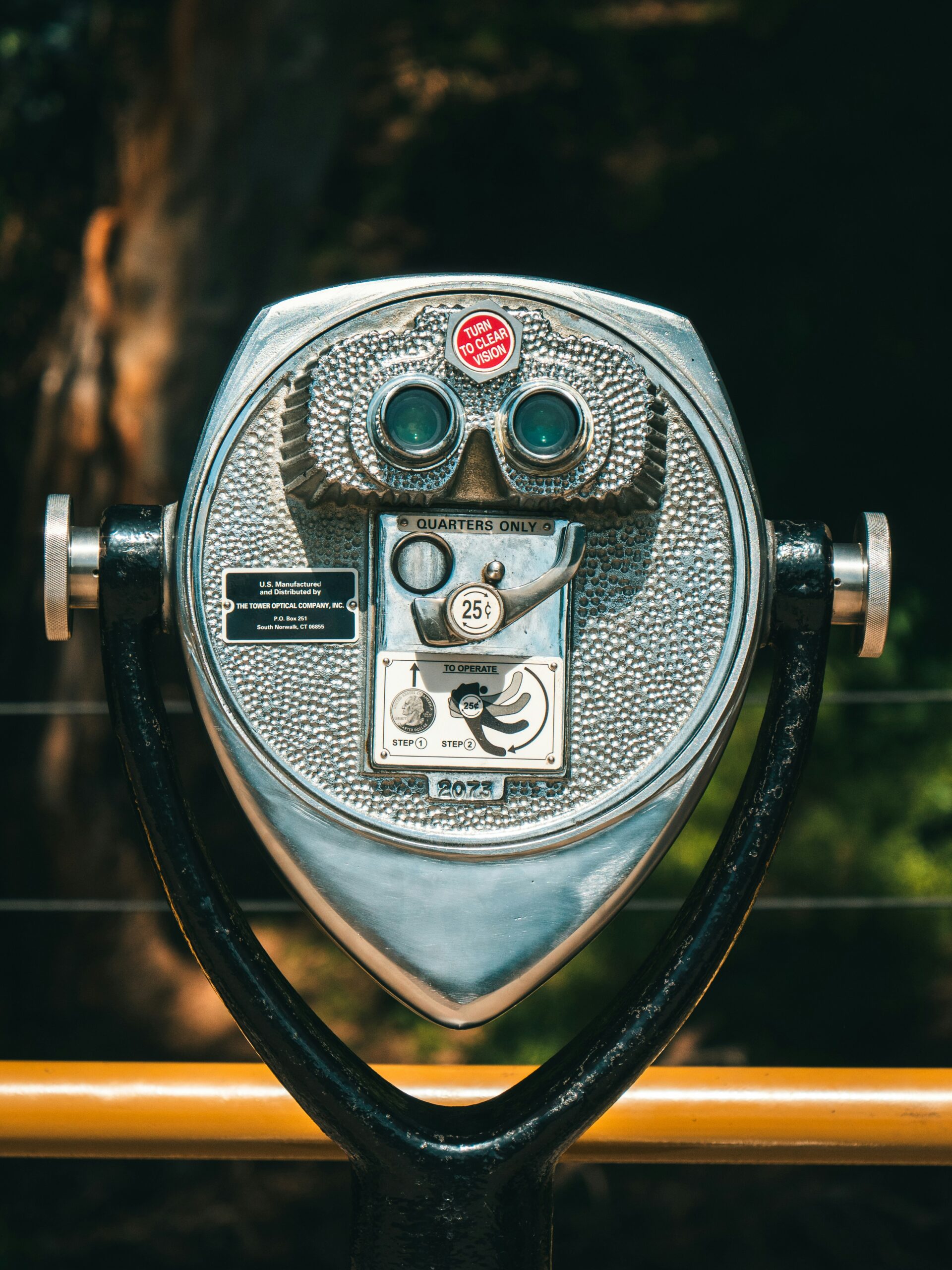Have you ever wondered why some binoculars can cost a fortune while others can be quite affordable? Well, the answer lies in the intricate engineering and superior craftsmanship that goes into crafting these optical devices. From the quality of the lenses and coatings to the precision of the mechanics, every element of a pair of binoculars contributes to its price tag. In this article, we will explore the factors that make some binoculars more expensive than others, giving you a better understanding of the value behind these incredible tools for observing the world.

Understanding Binoculars’ Anatomy
Lens and prism system
The lens and prism system is a crucial component of binoculars. Binoculars typically have two sets of lenses – objective lenses at the front and eyepiece lenses near the eyepieces. The objective lenses gather light and are responsible for creating the primary image. The eyepiece lenses subsequently magnify that image, allowing you to see the distant object in greater detail. The prism system, which can be either roof prism or Porro prism, ensures that the image is properly inverted and presented in the correct orientation to our eyes.
Objective and eyepiece lenses
The size and quality of the objective and eyepiece lenses greatly affect the performance of binoculars. The objective lenses determine the amount of light that enters the binoculars, which directly impacts the brightness of the image. Larger objective lenses allow more light to enter, resulting in better low-light performance. On the other hand, the eyepiece lenses determine the magnification power and also play a role in enhancing the sharpness and clarity of the image.
Field of view
The field of view refers to the width of the area that can be seen through the binoculars at a specific distance. A wider field of view allows you to see more of the surroundings and is particularly useful when observing moving objects or scanning a large area. The field of view is determined by the design of the binoculars and the optical components used. Higher quality binoculars often have a wider field of view, providing a more immersive viewing experience.
Magnification
Magnification is a crucial factor when choosing binoculars. It determines how much closer the object will appear when viewed through the lenses. Common magnification ranges for binoculars are 8x, 10x, and 12x, where ‘x’ denotes the factor of magnification. Higher magnification can provide more detail and allow you to observe distant objects more closely. However, higher magnification also reduces the stability of the image and makes it more challenging to maintain a steady view. Therefore, it is important to consider the intended use and stability requirements when selecting the magnification power.
Comparison of Materials Used
Quality of glass used in the lenses
The quality of the glass used in the lenses greatly affects the image clarity, brightness, and color accuracy produced by binoculars. High-quality binoculars often utilize premium optical glass, such as low-dispersion glass or extra-low dispersion (ED) glass. These types of glass minimize chromatic aberration, which can cause color fringing and reduce overall image quality. The use of high-quality glass ensures that the image transmitted through the lenses is sharp, clear, and free from distortions.
Coatings applied to the lens
Lens coatings play a crucial role in improving the performance of binoculars. Coatings are applied to the lenses to reduce reflection, improve light transmission, and enhance contrast. The most commonly used coatings are anti-reflective coatings, which minimize the amount of light that is lost through reflection, resulting in brighter images. There are different levels of coating quality, ranging from single-coatings to multi-coatings. Higher-end binoculars often feature multiple layers of coatings, maximizing light transmission and providing better image quality.
The type of prisms used
Binoculars can employ two different types of prisms – roof prism or Porro prism. Roof prism binoculars have a compact and streamlined design, enabling a more ergonomic and portable form factor. They typically utilize higher quality prisms, resulting in better light transmission and image quality. Porro prism binoculars, on the other hand, have a more traditional design and offer greater depth perception. While Porro prism binoculars tend to be larger in size, they can provide excellent image quality at a lower price point.
Optical Image Quality
Brightness
Brightness refers to the level of light that enters the binoculars and determines how well the object is illuminated. Factors that contribute to brightness include the size of the objective lenses, the quality of glass used, and the effectiveness of lens coatings. High-quality binoculars with larger objective lenses and premium coatings often deliver brighter images, making them ideal for low-light conditions, such as twilight or dawn.
Sharpness
Sharpness is a significant aspect of optical image quality. It determines how well-defined and crisp the details are when viewing through the binoculars. The combination of high-quality lenses, precision engineering, and superior coatings contributes to sharper images. Binoculars with ED glass or other types of low-dispersion glass tend to minimize distortions, resulting in sharper and more accurate images.
Depth of Field
The depth of field refers to the range of distance that appears acceptably sharp in the image when the focus is set on a specific distance. A greater depth of field allows you to see a broader range of distances in focus simultaneously. Binoculars with a larger depth of field can be advantageous when observing dynamic scenes or when you need to quickly shift focus between different objects without constantly adjusting the focus wheel.
Chromatic aberration
Chromatic aberration occurs when different colors of light do not converge at the same point, causing color fringing in the image. High-quality binoculars use advanced lens technologies and materials, such as low-dispersion glass, to minimize chromatic aberration. The reduction of chromatic aberration results in sharper images with better color accuracy, making for a more enjoyable viewing experience.
Design and Engineering
Roof Prism vs. Porro Prism
The choice between roof prism and Porro prism binoculars depends on personal preference and specific requirements. Roof prism binoculars have a more compact and streamlined design, making them easier to handle and transport. They often feature better waterproofing and fog-proofing properties, and the higher quality prisms used in roof prism binoculars result in improved image quality. Porro prism binoculars, on the other hand, offer greater depth perception and can be a more affordable option for those seeking good image quality at a lower price point.
Number of lens elements and groups
The number of lens elements and groups in a binocular refers to the individual lenses that make up the optical system. More lens elements and groups usually indicate a more complex and advanced design, which can contribute to improved optical performance. However, a higher number of lens elements does not always guarantee superior image quality, as the quality of the lenses and coatings is equally important. Manufacturers strive to find the optimal balance between the number of elements, image quality, and weight to create the best binoculars for a particular purpose.
Presence of ‘phase correction’ coating on roof prism models
Phase correction coatings are special coatings applied to the roof prisms in some binocular models. These coatings help correct phase shifts that can occur when light passes through the prisms, resulting in improved image sharpness and contrast. Binoculars with phase correction coatings typically offer exceptional image quality and are highly desired by birdwatchers and other wildlife enthusiasts who require precise and detailed views.

Brand and Manufacturer
Reputation
The reputation of a brand and manufacturer is an essential consideration when purchasing binoculars. Established brands with a long-standing history in optics, such as Nikon, Leica, Swarovski, and Zeiss, have built their reputation on producing high-quality binoculars known for their exceptional performance and reliability. Their reputation is often an indicator of the level of craftsmanship, engineering, and quality control that goes into their products. However, it is important to note that there are reputable manufacturers outside of these well-known brands as well.
Warranty and customer service
The warranty and customer service offered by the manufacturer can greatly influence the overall ownership experience. A comprehensive warranty package gives you peace of mind and protection against any potential defects or issues that may arise. Additionally, responsive and helpful customer service can make a significant difference if you have any questions or require assistance with your binoculars. Checking the warranty policy and researching customer reviews can help ensure a positive buying experience.
Country of origin and manufacturing process
The country of origin and the manufacturing process can also provide insights into the quality of binoculars. Some countries, such as Germany, Austria, Japan, and the United States, have a strong reputation for producing high-quality optics. These countries often have a long-standing tradition of precision engineering and optical expertise. However, it is worth noting that there are exceptional manufacturers in other countries as well, and the country of origin should not be the sole determining factor when evaluating the quality of binoculars.
Durability and Build Quality
Waterproof and Fog proofing properties
The ability of binoculars to withstand exposure to moisture is crucial, especially for outdoor enthusiasts who may encounter rain, humidity, or other wet conditions. Waterproof and fog-proof binoculars are sealed to prevent water or moisture from entering the internal components, ensuring their performance remains unaffected even in challenging environments. Fog-proofing prevents internal fogging caused by sudden temperature changes, allowing for clear viewing even in varying weather conditions.
Housing material: plastic or metal
The choice of housing material greatly affects the durability and overall build quality of binoculars. Many binoculars feature a combination of metal and plastic components, with metal often used for critical structural parts, such as the chassis, and plastic for non-structural parts. High-quality binoculars typically utilize rugged materials and construction techniques to withstand rigorous use and provide long-lasting reliability. Metal housings are often preferred for their robustness and resistance to external impacts.
Quality of the focus mechanism
The quality of the focus mechanism significantly affects the ease of use and precision of binoculars. A smooth and well-engineered focus mechanism allows for effortless adjustment and precise focusing, ensuring that you can quickly and easily bring objects into sharp focus. High-quality binoculars often feature a focus wheel with a precise and tactile feel, allowing for fine adjustments and ensuring the focus remains stable even during extended periods of observation.

Additional Features
Image stabilization
Image stabilization is a valuable feature in binoculars, especially for those who engage in activities that require a steady view, such as birdwatching or marine observation. Image stabilization technology compensates for hand movements, resulting in a more stable and clearer image. This feature can significantly enhance the viewing experience, particularly when using higher magnification binoculars or for extended periods when holding the binoculars steady may become challenging.
Night Vision
Night vision capabilities in binoculars allow for adequate viewing in low-light conditions or complete darkness. This feature is particularly useful for wildlife observation, stargazing, or security applications. Binoculars with night vision employ specialized technologies, such as infrared illumination, to amplify the available light and present a visible image even in extremely low-light environments. Night vision capabilities often come at a higher cost, but can greatly expand the possibilities of when and where you can use your binoculars.
Rangefinder capabilities
Some high-end binoculars feature built-in rangefinders that allow you to determine the distance to an object without the need for additional equipment. Rangefinder binoculars use laser or infrared technology to measure the time it takes for the emitted signal to return after hitting the target. This information is then displayed in the viewfinder, providing accurate distance measurements. Rangefinder binoculars are particularly useful for hunters, golfers, and other outdoor activities that require precise distance calculations.
Size, Weight, and Portability
Compact vs Full-size binoculars
Choosing between compact and full-size binoculars depends on your specific needs and preferences. Compact binoculars are lightweight, portable, and often foldable, making them convenient for travelers, hikers, and outdoor enthusiasts who prioritize portability. They are ideal for daytime use and general observations but may have limitations in low-light conditions due to their smaller objective lenses. Full-size binoculars, on the other hand, typically have larger objective lenses and provide superior light-gathering capabilities, making them well-suited for low-light conditions and more demanding applications.
Weight in relation to materials used
The weight of binoculars can vary considerably depending on the materials used and the desired features. Lightweight materials like magnesium alloys are often used in premium binoculars to ensure durability while keeping the weight down. The weight of the binoculars should also be considered in relation to how they will be used. For extended periods of observation or when carrying the binoculars for long distances, lighter weight binoculars may be more comfortable and practical.
Ease of transportation and storage
In addition to the weight, the overall design and size of the binoculars also contribute to their ease of transportation and storage. Compact binoculars are naturally more portable and can easily be carried in a bag or pocket. Full-size binoculars may require a dedicated carrying case or a neck strap for convenience. Consider the size and form factor of the binoculars in relation to your intended use and how you plan to transport and store them to ensure they are easily accessible and well-protected.
Purpose
Bird watching
Binoculars are a must-have tool for birdwatchers, enabling them to observe birds up close and appreciate their intricate details. When choosing binoculars for bird watching, factors like lightweight design, good magnification, and high optical performance are essential. A wider field of view is also helpful for tracking birds in flight or scanning larger areas to locate birds. Additionally, binoculars with excellent close focus capabilities allow for detailed observations even at short distances.
Hunting
Hunters often rely on binoculars to spot game, assess distances, and evaluate their surroundings. Binoculars for hunting should have good light transmission, rugged construction, and a magnification power suited to the hunting environment. The ability to quickly focus and a wide field of view are crucial for locating targets and monitoring movements. Water resistance and durability are also essential features to withstand various weather conditions and rugged environments.
Stargazing
Stargazing enthusiasts require binoculars that offer excellent low-light performance and clear, high-resolution views of celestial objects. Binoculars designed for stargazing should have large objective lenses for optimal light gathering, high magnification to observe distant objects, and good image stabilization to counteract hand movements. A wide field of view is desirable for scanning the night sky and observing wide-ranging celestial events.
Spectator sports
Binoculars are a popular accessory for sports enthusiasts who want to bring the action on the field or court closer. The ideal binoculars for spectator sports should have a balance between magnification and field of view. Higher magnification allows for detailed viewing of players and actions, but a wider field of view ensures that you can still capture the entire scene without constant adjustments. Portability, ease of focus, and durability are also important considerations for sports fans.
Price Vs Value
Cost of raw materials and manufacturing
The price of binoculars is influenced by the cost of raw materials, such as high-quality glass, precision-engineered components, and advanced coatings. The manufacturing process itself involves intricate assembly, quality control, and rigorous testing, all of which contribute to the final cost. Additionally, the use of advanced technologies, such as image stabilization or night vision, can significantly impact the price. Higher-priced binoculars often reflect the investment in superior materials, craftsmanship, and technology.
Quality and price: Is expensive always better?
While higher-priced binoculars often offer superior quality and performance, it is not always necessary to opt for the most expensive option. The best binoculars for you are the ones that meet your specific needs and budget. There are exceptional options available at various price points, targeting different users and applications. It is essential to assess the specific features, optical performance, and build quality offered by each binocular model to determine its value proposition and effectively match it to your requirements.
Assessing the value: Matching the binoculars to user need and budget
Assessing the value of binoculars involves considering multiple factors, such as the intended use, optical performance, build quality, and price. It is crucial to match the binoculars to your specific needs, whether it’s bird watching, hunting, stargazing, or other activities. Understanding the trade-offs associated with price and features helps determine the best balance that aligns with your budget. Considering reputable brands, customer reviews, and professional recommendations can also aid in making an informed decision regarding the value and suitability of the binoculars.
